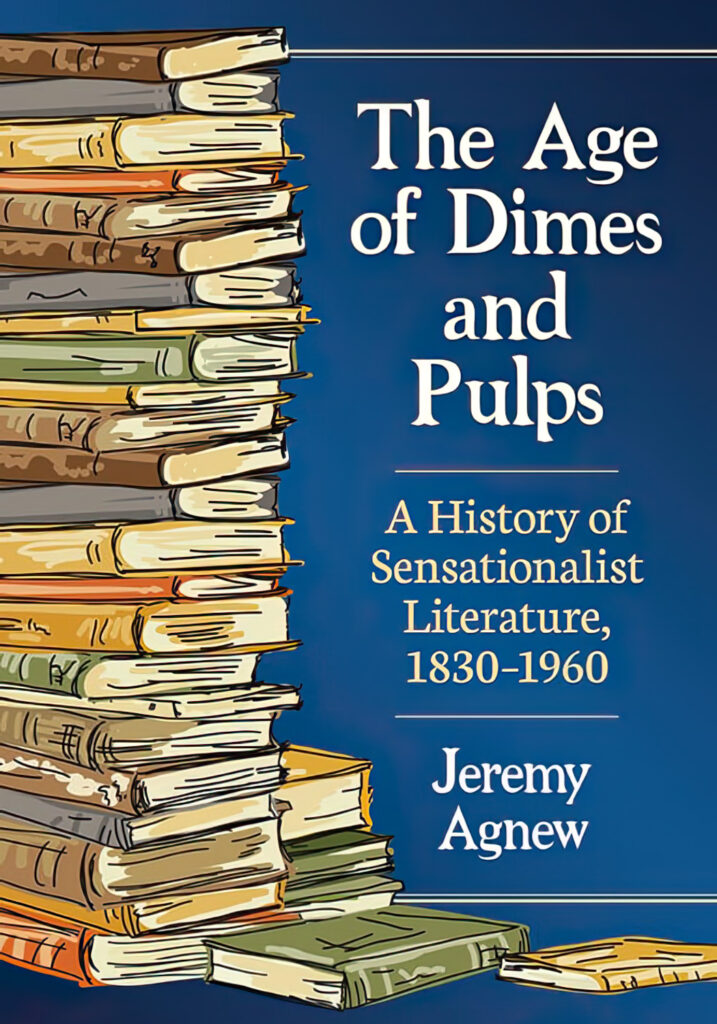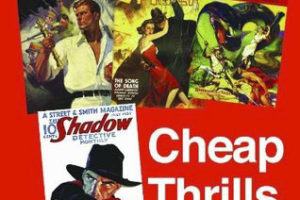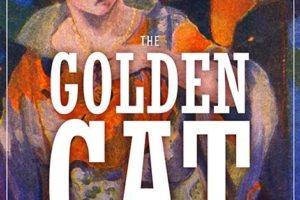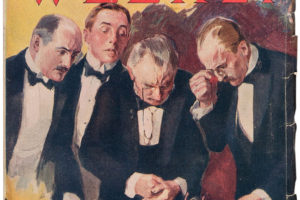I recently obtained the book The Age of Dimes and Pulps by Jeremy Agnew and published by MacFarlane Books in 2018.
 I am always on the lookout for more academic works on the pulps and am usually sadly disappointed.
I am always on the lookout for more academic works on the pulps and am usually sadly disappointed.
Let’s start with some definitions:
Sensationalist: sensationalistic; tending to sensationalize; characterized by sensationalism (the use of exaggerated or lurid material in order to gain public attention)
Lurid: shocking, horrifying, melodramatic (unnatural in situation or action, exaggeratedly emotional or sentimental)
I wanted to start this review with these definitions, as they are words that are used often in this work and that I have often seen being used in referring to pulp fiction.
The problem is that if you read just the definitions, they don’t seem that bad. But I think for many people both terms are seen as negative. More so than I think the author understands.
Agnew uses the term “sensationalist literature” to describe dime-novel and pulp-magazine fiction. But I don’t think that’s accurate. Note that it’s “exaggerated or lurid” material to gain attention. While what I know of dime novels is they did exaggerate, this was not true overall with pulps.
Further, as I looked at these terms, it seems that “sensationalism” is used more for journalism and in a very negative way. Thus, I prefer the term “popular literature” to describe these media.
And as for lurid, the problem here is I think for most people their view of lurid goes beyond just melodramatic to titillation: works that use sex or the hint of sex. I think of the spicy pulps as lurid. I don’t think of, say, Blue Book, Argosy, Adventure, et al, as lurid.
Further, I’ve been frustrated by many, both within our hobby and academics, as well as outside, who want to slap the term “pulp” on things that aren’t. Remember the term came about because of the paper used in pulp magazines, and then was applied to the style of writing that editorial decree created.
So if the medium you are speaking about doesn’t use pulp paper and the style of writing is not in line with the pulp magazines, you shouldn’t use the term. For instance, paperback books had neither.
But back to the review.
The Age of Dimes and Pulps: A History of Sensationalist Literature, 1830-1960 looked very promising, though I was wary due to the use of “sensationalist” in the subtitle. Despite some flaws, this work comes the closest to what I have been looking for.
Now Agnew makes it clear early on that his focus is on two literary creations that were huge in dime novels and transitions to the pulps: the cowboy hero and the hard-boiled detective. This is a little strange. While the dime novels had detectives, the hard-boiled detective was really a creation of Black Mask.
But this means that the other genres that existed in the pulps will not get the level of coverage. They won’t necessarily be ignored, but not give the same level of coverage.
We start off by looking at the origins of this sort of fiction in people’s interest in topics like true crime, horror and supernatural stories, yellow journalism, and the like. We learn of changing technologies (and later postage rates), which are what made the first dime novels and later pulp magazines possible. There is also the matter of increasing literacy and the “slick” magazines versus “pulps.”
Next is a nice chapter on the history and development of dime novels. I find it strange that so few of the dime-novel publishers seem to make the transition to pulps, whereas several of the pulp publishers did live on publishing other materials.
The next two chapters gets into the cowboy heroes and themes in dime novels. Next the detective heroes in dime novels. This I was more familiar with. There is a section on Nick Carter. And we also look at a trio of authors that contributed to this genre: Edgar Allan Poe, Wilkie Collins, and Conan Doyle.
The next chapter gives us the transition to the pulps. Then we’re on to fantastic heroes and adventures. Thus we learn about Edgar Rice Burroughs, lost-race stories, masked avengers and swashbuckling heroes, The Shadow and Doc Savage, and other pulp heroes.
Detectives becoming hard-boiled follows. Crime fiction giving way to detective fiction. Black Mask and Carroll John Daly, the creator(s) of the hard-boiled detective. And Dashiell Hammett. The next chapter gets into others such as Erle Stanley Gardner, Raymond Chandler, Mickey Spillane, and more.
The cowboy returns with two chapters on pulp westerns. Then a chapter on many other pulp genres: sports, aviation, science fiction, romance, and the spicys. A further chapter gets into yellow peril, pulp horror, and weird-menace/shudder pulps.
The final chapter covers what killed or replaced the pulps: TV, comicbooks, mass-market paperbacks, and men’s adventure magazines (the “sweats”).
As I said, despite some flaws this is a fairly decent work. The chapters are footnoted, and there is a nice two-page bibliography. While he cited one book from Popular Press, formerly at Bowling Green University, I wonder if the author is aware of the popular culture program there and their publications?
I would have liked to have seen a more scholarly version of the Blood ‘n’ Thunder Guide to Pulp Fiction.
As I read over The Age of Dimes and Pulps, I would hit a topic and I would wonder why this or that wasn’t mentioned. But it could be they’ve only become more available in the past few years thanks to recent reprints and research. This book will go on my reference shelf, and I hope that someone may be inspired to take this area further.
If you are looking for such works, check this one out.
[An earlier version of this appeared in From the Den of a Pulp Super-Fan #2, in PEAPS mailing #142, February 2023]


